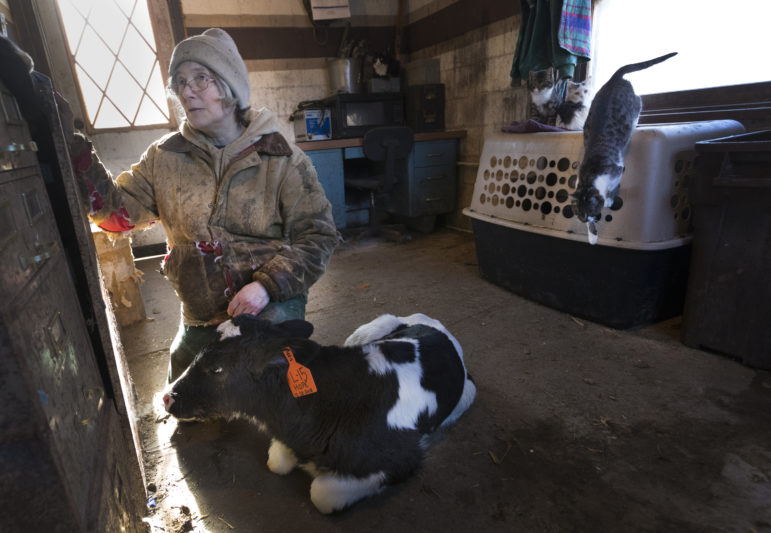The Food & Environment Reporting Network collaborated with the Midwest Center for Investigative Reporting to reveal that North Carolina for a decade had buried complaints by rural residents about noxious pollution from industrial hog farms. In public records obtained from top livestock producing states, North Carolina stood out for its 33 public complaints over a decade, compared with thousands in other states. The story first ran in The Guardian. Read the Story »
Food Bank News was the first to report on an ambitious plan by food activist and former celebrity chef Michel Nischan to tap into Medicaid funding to promote the health of low-income people by increasing their access to fruits and vegetables. Other outlets picked up the report, spreading word of Nischan’s innovative approach within the growing food-as-medicine movement. Read the Story »
The Pulitzer Center on Crisis Reporting launched Bringing Stories Home, an initiative to help local and regional U.S. news outlets do ambitious public service reporting for their communities. One of the 11 projects supported through the initiative is an ambitious series by the Milwaukee Journal Sentinel covering the long-term global economic challenges facing Wisconsin's signature dairy industry. Members of Congress have cited the series in their calls for changes to agricultural policy. Read the Story »

Sue Spaulding is shown with a 3-week-old calf named Hope, being kept in a warm office because it has been having health issues on their farm in Shell Lake, Wisconsin. Hope died a few days later. Photo credit: Mark Hoffman/Milwaukee Journal Sentinel.
The Midwest Center for Investigative Reporting analyzed decades of data to show that use of the pesticide glyphosate has dramatically increased, especially in the top corn and soybean states, over the past 20 years despite lawsuits that resulted in multimillion-dollar awards for damages. Read the Story »
The New Food Economy found that the Agriculture Department used data in misleading ways to burnish its civil rights record by depicting a renaissance in black farming. That false narrative cost black farmers land and money in foreclosures and lawsuits involving discrimination claims, and it has distorted debate over reparations. Read the Story »

Haywood Harrell, a former agricultural agent and black farmer in Halifax County, North Carolina. Photo credit: Madeline Gray</em)
Despite its nickname of “The Garden State,” New Jersey is best known for its highways and tank farms. NJ Spotlight, partnering with NJTV News, set out to assess the state of farming and found it to be surprisingly healthy. The multimedia project explored what New Jersey has done well, the struggles farmers still face and how farming is changing to remain vital in the most densely populated state in the nation. Read the Story »
Civil Eats, in partnership with NBC News, explored how valley fever, an illness caused by a soil-borne fungus, is hitting farmworkers and residents of rural communities hard. Although treatable, valley fever is often misdiagnosed, allowing the disease to spread and the symptoms to worsen as infection rates appear to be rising with climate change-fueled drought and a 240% increase in dust storms. Read the Story »

Illustration credit: Anuj Shrestha for NBC News